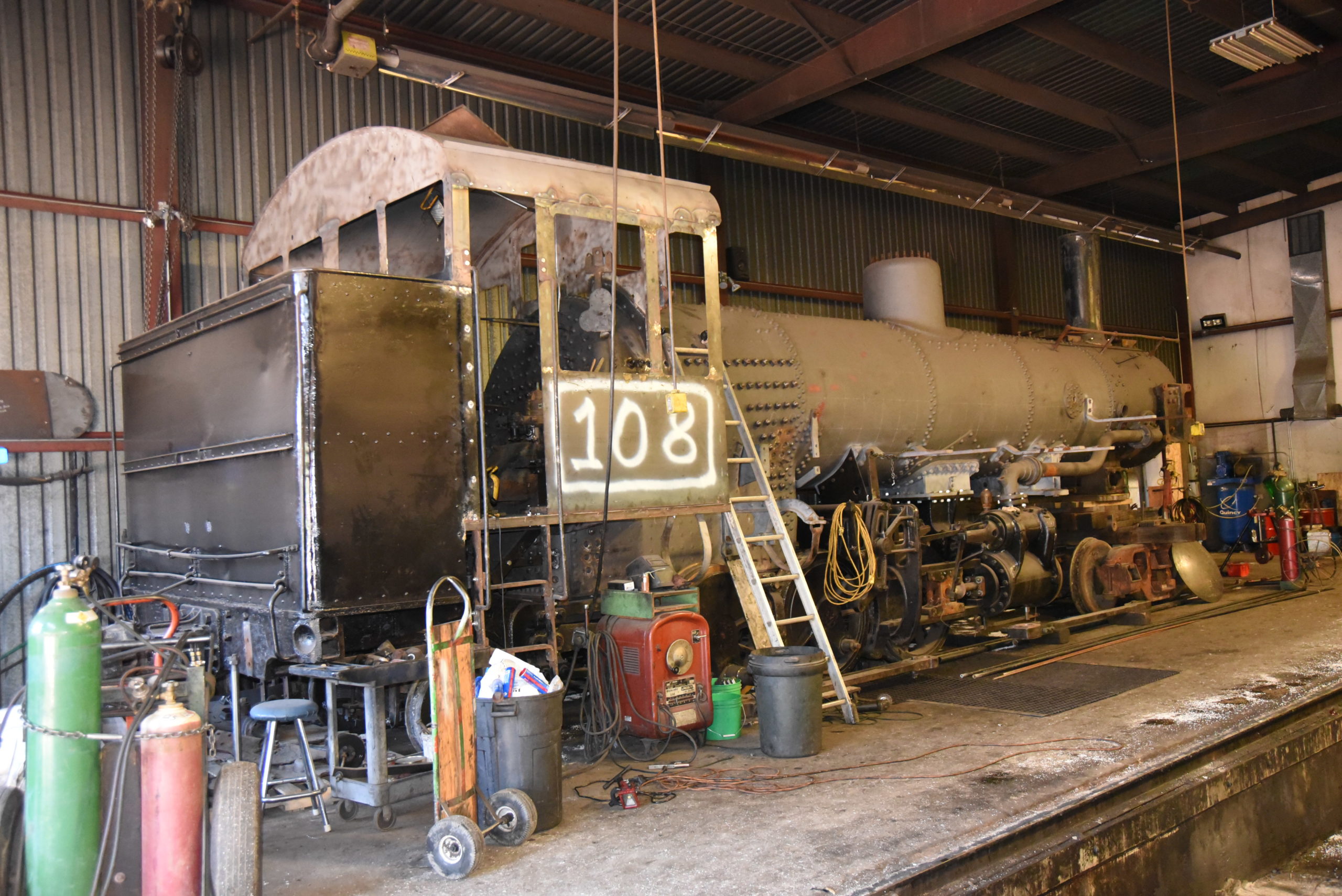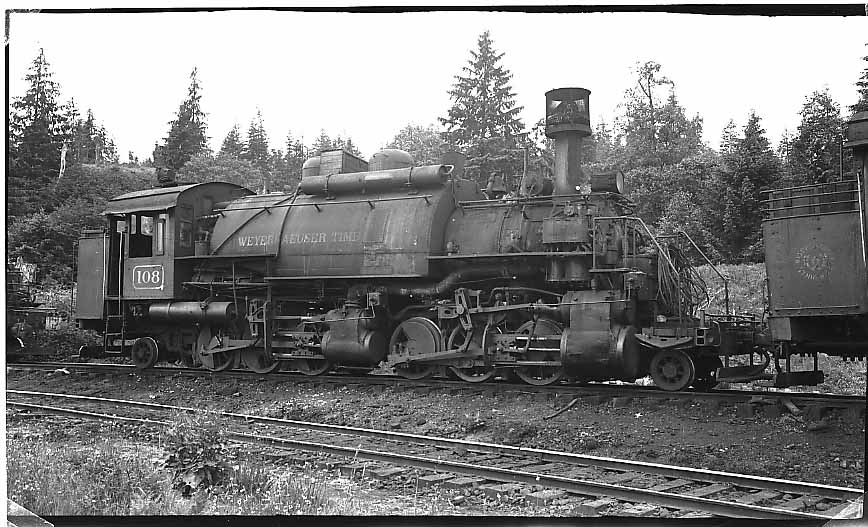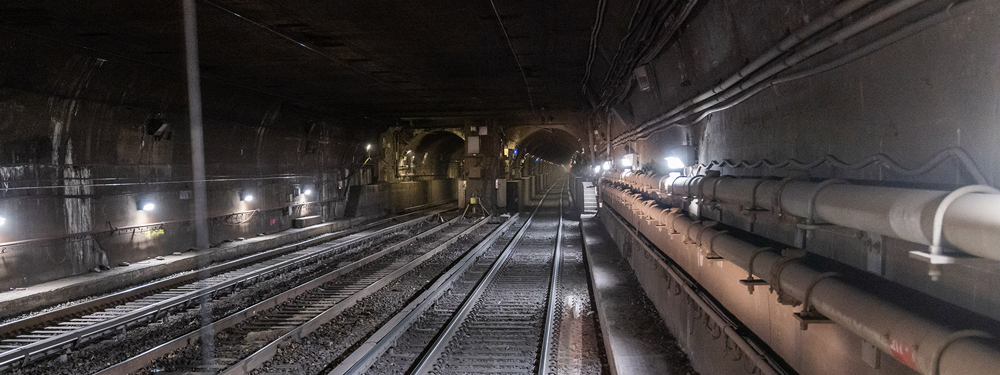Baldwin logging Mallet No. 108 is coming together at Black Hills Central, where similar 2-6-6-2T No. 110 has been the primary power for years. No. 108 locomotive arrived at the tourist railroad in 2016 after years of storage at the Northwest Railway Museum in Snoqualmie, Wash.
The railroad reported in an email to Trains magazine on Monday: “We had good month of progress on 108 in March. The low pressure pistons, crossheads, and valves are rebuilt and installed. Suspension and brake rigging are about 70 percent complete, journal boxes and wheel work is complete on the low pressure engine. The high pressure engine is 90 percent complete. Boiler work is about 70 percent complete. Air system is 95 percent complete. Steam fitting is 10 percent complete.”
The railroad expects to hydro and steam test this fall. The final stages will be to lag and jacket the boiler and set the water tank onto the boiler.
The restoration is welcomed news among steam enthusiasts. Pacific Northwest steam historian Martin Hansen offers this perspective: “This 1926 Baldwin 2-6-6-2T spent her entire working career in logging service in the Pacific Northwest. Originally ordered as a coal burner for the Potlach Lumber Co. of Potlach, Idaho where she was No. 24, she later converted to burn oil when she was purchased by Weyerhaeuser Timber Co. for use on that company’s Headquarters Operation out of Longview, Wash., where she became No. 108. She was one of only three Baldwin logging Mallets to be built with full saddle tanks over her boiler, rather than the more common split side tanks found on other tank Mallets of the day.”
With the coming of diesels at Longview in the early 1950s, No. 108 was placed on display at the company headquarters in Longview. After a few years she was donated to what is now the Northwest Railway Museum, where she was stored untouched for more than 50 years, Hansen added.
You will soon be able to read more about these fascinating locomotives in the up-coming White River Publications book, “Timber Titans – The Story of Baldwins Logging Articulated Locomotives,” by Dale Sanders, Steve Hauff, and Martin E. Hansen.
















It is too bad that the Uinta 2-6-6-2T’s did not survive. I would have loved to have seen one of them in operation.
The above comments are general in nature and do not form the basis for an attorney/client relationship. They do not constitute legal advice. I am not your attorney. Find your own damn lawyer.
One of the great things about these locos being in service on the Black Hills Central is the railroad itself is excellent at demonstrating the capabilities of these locos with its steep grades and sharp curves. The sound of these locos climbing up the grade out of Hill City is a wonderful thing to hear.
I always wanted to see this locomotive. I grew up about 40 miles west of Potlach. Born way too late to see it there. For that matter too young to have seen it operate at Longview. I guess I will have to go to South Dakota.
I’m not a big steam fan but the Black Hills Central is a great museum to visit. I was up there a few years ago and thoroughly enjoyed myself. The ride is interesting and the sounds emanating from the locomotive were awesome. The South Dakota Railroad Museum is nearby and the old Burlington branch into Deadwood is now a rail trail where you can walk, run or bicycle to explore the Black Hills scenery. Stay on the trail due to poison ivy and rattlesnakes.
The museum at Snoqualmie ran two other Mallets at different times, and some found them to be unexciting because using steam twice made them quiet. That is not true at Black Hills Central, where the roller coaster profile produces a lot of stack talk.